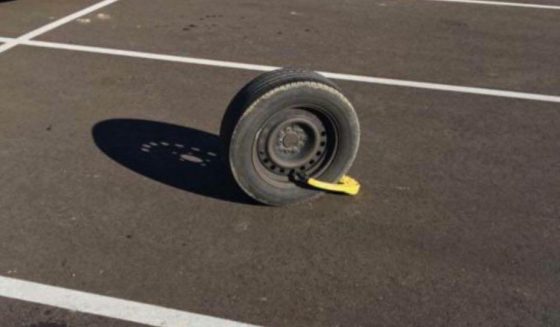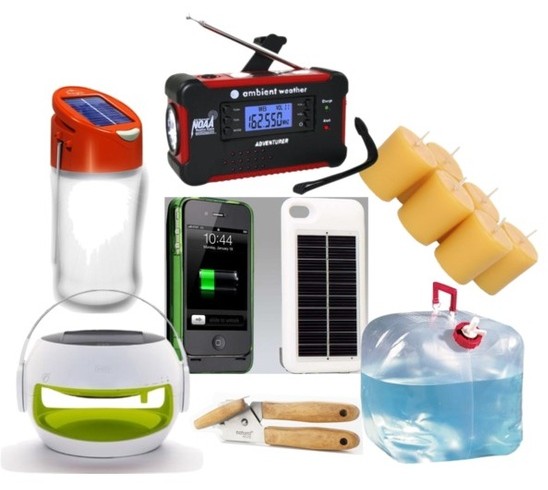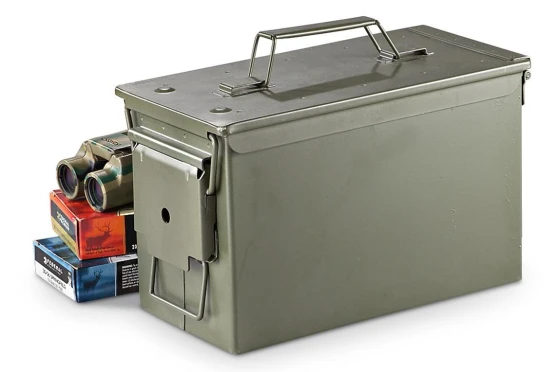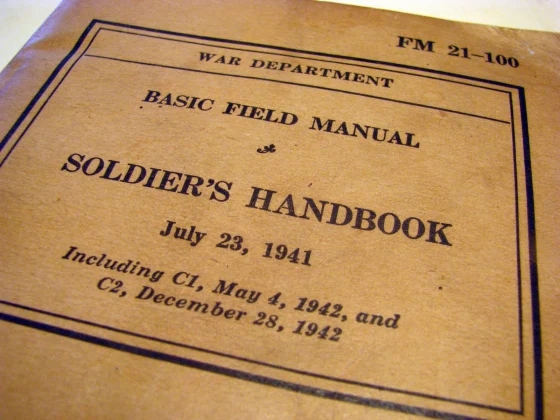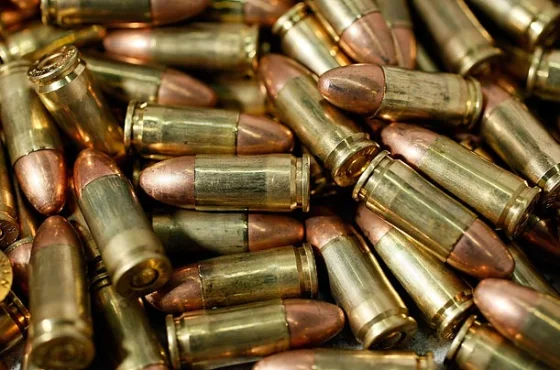Survivalism explained to “non-prepared” friends: “I want to be able to weather any common event, storm, power outage, robbery with no problem at all. Conveniently, if the end of the world as we know it comes then I get to avoid the inevitable shootouts at WalMart.”
– Author Unknown –
Contents:
Prepper Mindset:
- Introduction To The Prepper Mindset
- Be The Most Dangerous Person In The Room
- Attitude
- Combat Mindset and the Cooper Color Code
- Be A Leader
- Be the “Sheepdog”
- Be the “Boy Scout”
- Be the “Gray Man”
- Be the “Minuteman”
- Think Outside of the Box
- Situational Awareness
- Learn To Read Body Language
- Recognize the Players
- Carry Concealed
- Get Tactically Squared Away
Prepper Skillsets:
- Skillsets
- Hard Skills vs. Soft Skills
- Most Basic Survival Skillsets
- More Advanced Skillsets
Prepper Assets:
- Assets: Tactically Squared Away
- Assets: Order of Importance
- Assets: Magnitude of Asset Allocation
- Basic Assets
- Advanced Assets
Bug-Out vs Shelter in Place:
- Shelter in Place or Bug-Out? Stay or Go?
- Stay or Go? Factors In Your Decision Making
- Shelter in Place
- Evacuation / Strategic Relocation / Bug-Out
- Evacuation Planning
- Shelter in Place
- Where Not To Go?
- Where to Go?
- When To Go
- How To Get There
- Plan in Advance
- Bug-Out Bag
- Where To Go
Bartering:
- Basic Bartering Rules of Thumb
- Items That You Can Barter
- Services and Teachable Skills That You Can Barter
- Rethinking Bartering
Help Your Neighbors:
xxx
Your Survival Group:
- General Thoughts
- Your Survival Group Members
- Group Organization
- Your Neighbors and Community
- Operational Security With Your Neighbor
Alternative Uses of Items:
- Shemagh
- Duct Tape
- Vinegar
- WD-40
- Trash Bags
- Aluminum Foil
- Baking Soda
- Hydrogen Peroxide
- Petroleum Jelly
- Aluminum or Tin Cans
- Aluminum Can Pull-Tabs
- Old Soap
- Pantyhose
- Nail Polish
- Dental Floss
- Tampons
- Super Glue
- Drinking Straws
- Shotgun Shells
- Hand Warmers
- Coffee Filters
Prepper Reality Check:
xxx
Mindset – Introduction To The Prepper Mindset:
- Graywolf Survival’s Develop A Survival Attitude
- SWAT’s Can You Survive?
- SWAT’s Survival State of Mind
Rethink your attitude. Hurricanes, earthquakes, tsunamis, tornadoes, wildfires, terrorism, riots and social unrest, nuclear accidents, violent crime, medical emergencies? Every one of these disasters has occurred in the past 24 months, most of them right here in the United States. September 11th is proof that the government can’t stop it from happening. Hurricane Katrina is proof that the government can’t take care of you after it does. With disasters it is never a question of if, but rather a question of when. It is naive to think otherwise, and negligent on the part of the individual not to make a survival plan tailored to the type of disaster that might be expected in their part of the world.
What about smaller, less dramatic calamities? A dead car battery, a flat tire, a car fire, a city-wide blackout, a person laying unresponsive in the street, a child choking at the next table over in a restaurant, a suspicious man following you as you walk back to your car.
back to top
Mindset – Be The Most Dangerous Person In The Room:
back to top
Mindset – Combat Mindset and the Cooper Color Code:
Wikipedia’s Article on Jeff Cooper & the Cooper Color Code:
The most important means of surviving a lethal confrontation, according to Cooper, is neither the weapon nor the martial skills. The primary tool is the combat mindset, set forth in his book, Principles of Personal Defense.
The color code, as originally introduced by Jeff Cooper, had nothing to do with tactical situations or alertness levels, but rather with one’s state of mind. As taught by Cooper, it relates to the degree of peril you are willing to do something about and which allows you to move from one level of mindset to another to enable you to properly handle a given situation. Cooper did not claim to have invented anything in particular with the color code, but he was apparently the first to use it as an indication of mental state.
back to top
Mindset – Be A Leader:
“Leadership is the ability to tell someone to go to hell, and they leave to eagerly pack for the trip.”
-unknown-
“I do not fear an army of lions, if they are led by a lamb.
I do fear an army of sheep, if they are led by a lion.”
-Alexander the Great-
back to top
Mindset – Don’t Be A “Sheeple”. Be The “Sheepdog”:
Urban Dictionary’s Definition Of “Sheepdog”:
Certain special people, who watch over the rest of the people. The rest are called sheep. Sheepdogs prevent the “wolves” (bad people/things) from hurting the sheep. Sheepdogs understand violence is sometimes necessary in order to protect the sheep. The sheep really don’t like the sheepdog. Sheep prefer to go along their merry way, oblivious to the perils of life. Sheep tolerate sheepdogs’ existence in order to keep the wolves away. Police, soldiers, firefighters. A Sheepdog protects sheep from wolves.
back to top
Mindset – Be the “Boy Scout”:
“Be prepared.”
– Motto of the Boy Scouts of America –
“Make good scouts of yourselves, become good rifle shots so that if it becomes necessary that you defend your families and your country that you can do it.”
– Lord Baden-Powell, Scouting For Boys
 Expect problems. Be prepared for them.
Expect problems. Be prepared for them.
This means that you need to be mentally and emotionally prepared for something bad to happen, to have the skillsets to know what to do, and to have the proper gear and equipment to handle it.
back to top
Mindset – Be the “Gray Man”:
- The Art of Blending In: 5 Tips From a Counterintelligence Special Agent
- Zombie Squad’s Gray Man: Or How To Be Invisible
“Don’t look conspicuous. It draws fire.”
-From Murphy’s Laws of Combat-
Urban Dictionary’s definition of “Gray Man”:
A person who can blend in to any scene or situation without standing out, hiding his skills and qualities.
Thoughts On How To Be The Gray Man:
- Practice “urban camouflage”. Blend into your environment and try not be noticed.
- Project confidence so as to discourage aggression, while at the same time not projecting over confidence so as to attract unwanted attention.
- Consider the pros and cons of tattoos when trying to blend in to your environment. Consider when to hide scars and when to use them to your advantage.
- Dress so as to blend in various environments.
- Adopt an attitude so as not to draw attention.
- Do not draw unwanted attention with the vehicle you drive.
- Consider the advantages of owning a “Q car”.
- Use body posturing so as not to look suspicious.
back to top
Mindset – Be the “Minuteman”:
Urban Dictionary’s definition of “Minuteman”:
Term for a volunteer soldier in the American Revolution, who were supposed to be ready to fight against the British at a minute’s notice. These were often nothing more than farmers that happened to have a gun or two lying around.
President Kennedy’s Commemorative Message on Roosevelt Day, January 29, 1961
“This year, the celebrations of Roosevelt Day has special significance for Democrats everywhere; for we celebrate not only the triumphs of the past but the opportunities of the future.
Twenty-eight years ago Franklin Roosevelt assumed the leadership of a stricken and demoralized nation. Poverty, distress and economic stagnation blanketed the land. But it was not long before the great creative energies of the New Deal had lifted America from its despair and set us on the path to new heights of prosperity, power and greatness.
Today America is the richest nation in the history of the world. Our power and influence extend around the globe. Yet the challenges and dangers which confront us are even more awesome and difficult than those that faced Roosevelt. And we too will need to summon all the energies of our people and the capacities of our leaders if America is to remain a great and free nation — if we are to master the opportunities of the New Frontier.
The dimensions of our problems overwhelm the imagination. At home millions are unemployed and the growth of our economy has come to a virtual halt. Abroad, we are faced with powerful and unrelenting pressure which threaten freedom in every corner of the globe, and with military power so formidable that it menaces the physical survival of our own nation.
To meet these problems will require the efforts not only of our leaders or of the Democratic Party–but the combined efforts of all of our people. No one has a right to feel that, having entrusted the tasks of government to new leaders in Washington, he can continue to pursue his private comforts unconcerned with America’s challenges and dangers. For, if freedom is to survive and prosper, it will require the sacrifice, the effort and the thoughtful attention of every citizen.
In my own native state of Massachusetts, the battle for American freedom was begun by the thousands of farmers and tradesmen who made up the Minute Men — citizens who were ready to defend their liberty at a moment’s notice. Today we need a nation of minute men; citizens who are not only prepared to take up arms, but citizens who regard the preservation of freedom as a basic purpose of their daily life and who are willing to consciously work and sacrifice for that freedom. The cause of liberty, the cause of America, cannot succeed with any lesser effort.
It is this effort and concern which makes up the New Frontier. And it is this effort and concern which will determine the success or failure not only with this Administration, but of our nation itself.”
back to top
Mindset – Think Outside of the Box:
Urban Dictionary’s definition of “Think Outside of the Box”:
Try to solve the problem with unorthodox methods. Consider any idea, no matter how unusual.
back to top
Mindset – Practice Situational Awareness:
“Somewhere out there right now someone is preparing for the day you both shall meet. How prepared will you be?”
-Unknown-
Urban Dictionary’s definition of “Situational Awareness”:
Possessing the trait of always knowing what is going on around you; awareness of one’s situation.
 Pay attention to your surroundings. Always know what is going on around you. Recognize danger. Use you knowledge of what has happened in the past and your observations of what is happening now to predict what could happen in the near future. Listen to the voices in your head (your intuition). If something doesn’t seem right, it isn’t.
Pay attention to your surroundings. Always know what is going on around you. Recognize danger. Use you knowledge of what has happened in the past and your observations of what is happening now to predict what could happen in the near future. Listen to the voices in your head (your intuition). If something doesn’t seem right, it isn’t.
- Lucky Gunner’s What Is Situational Awareness?
- Lucky Gunner’s Beyond Awareness – Recognize The Threat
back to top
Mindset – Learn To Read Body Language:
back to top
Mindset – Recognize the Players:
Learn to recognize knowledge, skills, abilities, and assets of those around you. Examples:
- My neighbor has a hybrid vehicle that gets 55 MPG.
- My neighbor has a swimming pool with thousands of gallons of water.
- My neighbor is an avid hunter that can shoot and process game.
- My neighbor has solar panels that can charge batteries
- My neighbor has a gas-powered generator.
- My neighbor is an avid gardeners and produces more food than she can eat.
- My neighbor is a surgeon.
- My neighbor is a dentist.
- My neighbor was an electrician in the Navy.
- My neighbor was an emergency medical technician before she went to law school.
- My neighbor just rebuilt the engine in his ’65 Mustang.
None of these people are whom I would describe as “preppers”, yet they each possess extremely important skillsets or assets, especially in a prolonged emergency situation. Teach yourself to watch and listen for key information about people which might indicate that they have skillsets and assets that might benefit you in an emergency. Maybe your neighbor that owns a lawnmower repair business doesn’t sound like a good prepper asset, but just wait until your generator quits working on a hot night. You are going to wish that he was your best friend.
back to top
Mindset – Carry Concealed:
“The police do not provide security in your home, your business or the street. They show up after the crime to take reports and do detective work. The poorer the neighborhood, the riskier it is for peaceful residents. Only an armed citizenry can be present in sufficient numbers to prevent or deter violent crime before it starts, or to reduce its spread.”
-Libertarian Party Platform-
“Your attacker is in more danger from you, than you are from him.”
-Jeff Cooper-
back to top
Skillsets:
If you have experience as a Boy Scout, member of the military, police officer, firefighters, or in the medical profession then you are fortunate to have experience with first-aid, self-defense, survival, using tools, etc.
Skillsets — Soft Skills vs. Hard Skills:
Soft skills are skillsets that will most often keep you out of trouble. Think awareness and observation. Soft skills are passive in the sense that no one will ever know that you are practicing them.
Hard skill are used when the situation gets loud and painful (shooting skills, combative skills, etc.).
Skillsets — Soft Skillsets:
Mundane soft skills might include:
- Understanding the OODA Loop and Cooper’s Color Codes
- Thinking proactively when it comes to simple equipment and travel plans
- Comprehension of the Attack Cycle
- Risk midigation
- Ability to perceive improvised weapons — where they are and a willingness to use them.
- A basic understanding of surveillance (so that you will know when you are being watched).
More esoteric soft skills might include:
- Establishing multiple rally points (RP) and counter-surveillance measure with your whole group.
Skillsets — Hard Skillsets:
Basic Skills:
You should attempt to master the items on the following basic prepper skills list:
- Basic first-aid and CPR
- Drive a vehicle with a manual transmission
- Basic self-defense
- How to use a fire-extinguisher
- How to read a map
- How to change your car tire
- Jumpstart your car battery
Advanced Skills:
The following skillsets will make you a valuable to any prepper group.
- Advanced medical training
- Advanced self defense
- Mechanical, plumbing, or electrical
- Speak another language
- How to grow and can food
- How to raise livestock
- How to communicate with HAM radio equipment
- Gun-fighting and security tactics
- Wilderness survival
- How to drive a boat
- How to drive a motorcycle
- How to fly an aircraft
back to top
Assets:
Assets — Tactically Squared Away:
Assets — Order of Importance:
Rule of Three: “You can survive three minutes without oxygen. You can survive three days without water. You can survive three weeks without food.”
Based on the Rule of Three I would recommend that you base your preparations in this order:
- water
- food
- shelter
- medical
- shelter
- security
Assets — Magnitude of Asset Allocation:
Three days, one week, one month, three months, six months, one year.
FEMA recommends that each household have enough supplies to last three days. This is an absolute minimum, but it is where you should start. This would include bottled water, canned food or MREs, flashlight(s), first-aid kits, etc. A 72 Hour Bag / Bug-out Bag Checklist can be found on the Savannah Arsenal Checklist Page. Pack the items in backpacks so that if you have to leave in a hurry (“bug-out”) it will be easily portable. Once you have a three-day kit assembled, start working on assembling enough supplies to last you one week without a trip to Wal-Mart. Gallon jugs of water, canned food, Sterno or camp stove and fuel to heat it…more later.
Assets — Basic Assets:
- everyday carry gear (EDC)
- home emergency kit(s) and supplies
- bug-out bag and go-bag
- first-aid kits
- car emergency kit
- tools
- stored water & food
- vehicle(s)
Assets — Advanced Assets:
- fuel & generator
- self-defense gear
- medical supplies
- swimming pool and method to clean the water
- well
- gardening & canning equipment
- livestock
back to top
Shelter in Place or Bug-Out? Stay or Go?
There are two major types of major disasters: those where you shelter in place, and those you bug-out for.
Examples of disasters that you would stay and shelter in place include tornadoes, earthquakes or any other disaster that happens without any warning.
Disasters for which you might have time to bug-out, and which would be foolish to hang around for, include wildfires, volcanoes, nuclear emergencies, and hurricanes. It’s a no brainer that you need to leave when:
- A government mandated evacuation has been declared.
- A wildfire is headed your way.
- A nuclear / chemical / biological (NBC) plume is unleashed, and you are certain that you can’t hunker down and survive it.
- A volcanic event of overwhelming magnitude.
- A flood/tornado/earthquake/tsunami has obliterated your locale.
- A game-changing hurricane, where you have insufficiently fortified shelter.
- You are unprepared to bug in, with no supplies and no plan.
While the ability to evacuate is a critical part of emergency preparedness, the assumption that evacuation should be the first choice in any survival scenario is flawed. Placing all your hopes in getting to a retreat with the limited supplies that you can carry is a big gamble.
Shelter in Place assures the maximum safety of individuals in their present location when dangers of movement exceed the relative risk from the threat, or movement can not be completed in a reasonable timeframe.
back to top
Stay or Go? Factors In Your Decision Making:
Regional Disaster vs. EOTWAWKI:
- x
- x
Bugging-Out? Where Are You Going?
- x
- x
Benefits of Bugging Out:
- x
- x
Dangers of Bugging Out:
Just Stay Where You Are:
- x
back to top
Shelter in Place:
 Shelter in Place assures the maximum safety of individuals in their present location when dangers of movement exceed the relative risk from the threat, or movement can not be completed in a reasonable timeframe. Examples of disasters where you would stay and shelter in place might include tornadoes, earthquakes or any other disaster that happens without any warning. Sheltering in place might be your only option when:
Shelter in Place assures the maximum safety of individuals in their present location when dangers of movement exceed the relative risk from the threat, or movement can not be completed in a reasonable timeframe. Examples of disasters where you would stay and shelter in place might include tornadoes, earthquakes or any other disaster that happens without any warning. Sheltering in place might be your only option when:
- The authorities have established a quarantine.
- Your household includes an injured, sick, or elderly family ember who cannot be move.
- A pre-selected member of your bug-out crew is missing, and you don’t want to break up the group.
- Your evacuation routes are congested, barricaded, or otherwise impassable.
- Extreme weather, or another force of nature, or manmade event or hazard makes evacuation impossibly dangerous.
- Marauding gangs are in your pathway.
- Your bug-out vehicle is unusable.
- You are unprepared to bug-out with no provisions and no plan.
- You or a member of your clan lacks the necessary level of physical fitness to be on the move.
- Nuclear fallout makes it unsafe to be outdoors (often it will be safe to move in a matter of days).
Benefits of Sheltering in Place:
- x
- x
Danger of Sheltering in Place:
- x
- x
back to top
Evacuation / Strategic Relocation / Bug-Out:
 When it hits the fan America’s population centers will explode in violence, looting, and total breakdown of law and order. It’s a theory put forth by numerous survival and relocation specialists, and one that makes complete sense if you consider what happens in a truly serious collapse-like scenario.
When it hits the fan America’s population centers will explode in violence, looting, and total breakdown of law and order. It’s a theory put forth by numerous survival and relocation specialists, and one that makes complete sense if you consider what happens in a truly serious collapse-like scenario.
Because every crisis that threatens, even a local crisis, can turn exponential because of close proximity to people who cannot help themselves. Even good people panic in a crisis.
back to top
Evacuation Planning:
 After a major disaster motor travel may be difficult because gas stations will be without power and won’t be able to pump fuel. Be ready to transport your own fuel.
After a major disaster motor travel may be difficult because gas stations will be without power and won’t be able to pump fuel. Be ready to transport your own fuel.
Travel early in the morning will be your best bet, but even then you have to be ready to be a fish in a sea of refugees, all looking for the same things in a countryside filled with people who will quickly become intolerant of the thousands of needy, homeless families.
The farther you can get away from the affected area, the better, but your range is usually dependent on the preparation you have done before a catastrophe.
Provide some type of communications between other vehicles in your convoy (CB or GMRS). Cell phones will probably be inoperative.
More soon!
back to top
Where Not To Go:
Recent U.S. census data indicates that out of the 3000 counties in the United States, fully 50% of the population lives in just 146.
If you want to have any chance of surviving a wide-spread catastrophic event by avoiding the hordes that will be searching for critical resources in its aftermath, then check out the following map to get a visual reference of the areas you want to stay away from.
back to top
Where To Go:
 Those looking for strategic retreat locations or homes outside of major cities consider highway proximity. Be at least five to seven miles away from any major thoroughfare, which is generally outside the range people want to venture off familiar roads, and far enough away to make any ‘walkers’ too tired to attempt the trip without ample clean water and food.
Those looking for strategic retreat locations or homes outside of major cities consider highway proximity. Be at least five to seven miles away from any major thoroughfare, which is generally outside the range people want to venture off familiar roads, and far enough away to make any ‘walkers’ too tired to attempt the trip without ample clean water and food.
back to top
When To Go:

More soon.
back to top
How To Get There:
back to top
Plan in Advance:
- Pack a bug-out bag (see Bug-Out Bag packing list on Savannah Arsenal’s Checklist Page).
- Learn to determine whether you should stay or go.
- Make an evacuation plan in advance.
- Find multiple exit routes from the city.
- Make sure that your vehicle(s) is in good working order and that you have plenty of fuel (see Savannah Arsenal’s Transportation Page).
- Have the right footwear for walking out.
- Learn to navigate without a compass (see Savannah Arsenal’s Navigation Page).
- Learn to signal for help if you are stranded (see Savannah Arsenal’s Communications Page).
back to top
Bug-Out Bag:
 The 72 Hour Bag or your Bug-Out Bag is your sustainment load, or your gear needed to survive for at least 72 hours. The United States Federal Emergency Management Agency (FEMA) recommends that every household should have a enough emergency supplies to last your family at least three days. Your kit should be small and light enough to be portable should you have to bug out. Your Bug-Out Bag is your sustainment load that will ensure that you will have enough drinking water, food, shelter, medical supplies, means of communications, and means of self-defense to sustain yourself throughout the emergency.
The 72 Hour Bag or your Bug-Out Bag is your sustainment load, or your gear needed to survive for at least 72 hours. The United States Federal Emergency Management Agency (FEMA) recommends that every household should have a enough emergency supplies to last your family at least three days. Your kit should be small and light enough to be portable should you have to bug out. Your Bug-Out Bag is your sustainment load that will ensure that you will have enough drinking water, food, shelter, medical supplies, means of communications, and means of self-defense to sustain yourself throughout the emergency.
A more detailed explanation of the bug-out bag can be found on the 3rd Line Gear: 72 Hour Bag or Bug-Out Bag section of Savannah Arsenal’s Gear Page.
A list of suggested contents can be found in the Bug-Out Bag Checklist on Savannah Arsenal’s Checklist Page.
back to top
Help Your Neighbors?
back to top
Your Survival Group
Contents:
- General Thoughts
- Your Survival Group Members
- Group Organization
- Your Neighbors and Community
- Operational Security With Your Neighbor
General Thoughts:
Lone Wolf vs. Group Effort:
x
back to top
Your Survival Group Members:
back to top
Group Organization:
back to top
Your Neighbors and Community:
Know Who The Players Are. Learn to recognize knowledge, skills, abilities, and assets of those around you.
Examples:
- My neighbor has a hybrid vehicle that gets 55 MPG.
- My neighbor has a swimming pool with thousands of gallons of water.
- My neighbor is an avid hunter that can shoot and process game.
- My neighbor has solar panels that can charge batteries
- My neighbor has a gas-powered generator.
- My neighbor is an avid gardeners and produces more food than she can eat.
- My neighbor is a surgeon.
- My neighbor is a dentist.
- My neighbor was an electrician in the Navy.
- My neighbor was an emergency medical technician before she went to law school.
- My neighbor just rebuilt the engine in his ’65 Mustang.
None of these people are whom I would describe as “preppers”, yet they each possess extremely important skillsets or assets, especially in a prolonged emergency situation. Properly recruited and organized, their collective knowledge, skills, abilities, and assets could genuinely benefit everyone.
Teach yourself to watch and listen for key information about people that might indicate that they have skillsets and assets that might benefit you in an emergency. Maybe your neighbor that owns a lawnmower repair business doesn’t sound like a good prepper asset, but just wait until your generator quits working on a hot night. You are going to wish that he was your best friend.
back to top
Operational Security With Your Neighbors:
back to top

Bartering
Contents:
- Basic Bartering Rules of Thumb
- Items That You Can Barter
- Services and Teachable Skills That You Can Barter
- Rethinking Bartering
Basic Bartering Rules of Thumb:
As suggested in the May/June 2015 issue of Survivalist magazine:
- Engage your bartering partner.
- Do not be intimidated and always show you are on equal footing through body language.
- Exude confidence and ease to make yourself and your partner comfortable.
- Ask questions.
- Demonstrate flexibility.
- Be specific, transparent and fair throughout the process.
- Do not cheat your partner or allow yourself to be cheated.
- Produce a win/win scenario.
back to top
Items That You Can Barter:
Comfort Items:
- chocolate
- hard candy
- coffee & tea
- prescription meds
- sugar
- alcohol (vodka, apart from drinking, can also be used as a topical antiseptic)
- condoms
- tobacco and cigarette rolling supplies
Entertainment Items:
In a long-term disaster, boredom becomes a silent killer.
- games
- decks of cards
- paperback books on a variety of subjects
- crossword puzzle books, Sudoku
- music
- sports equipment
Personal / Sanitary Items:
- deodorant
- soap
- toilet paper
- feminine care
- dental care
- diapers & baby care
- disposable razors and razor blades
Cleaning Items:
- Vinegar and baking soda to use in DIY cleaning supplies
- Empty spray bottles and squirt bottles
Tools & Repair Items:
- tape
- glue
- nuts
- bolts
- screws
- washers
- wire
- nails
- knives of various types including fixed blades, kitchen knives, and box cutters.
- hand tools
- hatchets
- saws
- machetes
- heavy plastic sheeting and tarps
- sewing and mending supplies
- knitting or crochet needles and yarn
- hand pumps for both air and liquids
Defensive Items:
- ammo
- pepper spray
- armor
- weapons
- protective gear
Food & Water:
- water filters
- purification tablets
- heirloom seeds
- condiments and Spices
Medicinal Items:
- prescription drugs
- painkillers
- cough syrup
- cortisone cream
- Boil-ese
- calamine lotion
- topical pain relievers
- antibiotics
- essential oils
- first-aid kits
- bandages
- Latex or Nitrile gloves in a variety of sizes
Precious Metals:
- gold
- silver
Other Practical Items:
- fuel, any and all kinds (gas, diesel, propane, kerosene)
- solar battery charger and rechargeable batteries
- disposable batteries
- candles
- flashlights
- fire making supplies, including lighters, matches, flint fire steel
- propane
- bags, including large garbage bags as well as smaller zip-close bags
- paracord
- clothing and shelter materials
- Mylar blankets and tents
- hand warmers
- fishing supplies
- pencils & paper
back to top
Services and Teachable Skills That You Can Barter:
Food Preparation Skills:
- home-canning
- homesteading
- gardening
- farming
- fishing
- hunting
- gathering
- processing and curing wild game
- cooking
- beekeeping
- proper food storage
- water purification
Practical Skills:
- fire building
- sewing
- blacksmithing
- carpentry
- blade sharpening
- wood gathering and cutting
- shelter building
Mechanical Skills:
- auto repair
- small engine repair
- welding
- plumbing
Medical Skills:
- first-aid
- midwifery
- dentistry
- veterinary
- essential oil application
Defensive Skills:
- fight
- shoot
- tactics
back to top
back to top
Rethinking Bartering:
back to top
Shemagh:
back to top
Duct Tape:
Foot Blister Prevention With Duct Tape:
Some alternative uses of Duct Tape include:
- Repair a tent: You open your tent at the campsite and oops — a little tear. No problem as long as you’ve brought your duct tape along. Cover the hole with a patch; for double protection mirror the patch inside the tent. You’ll keep insects and weather where they belong.
- Make a rope: Twist one or several lengths of duct tape into a cord or rope. Of course paracord
would be a lot better and you do have some of that, right?)
- Make a clothesline: Twisting a long piece of Duct tape makes a great piece of rope to use as a clothesline.
- Hold the feathers in your sleeping bag: If you have a hole in your down sleeping bag, you can patch the hole with duct tape. No more feathers flying out all over the place.
- Reseal packages of food: Use duct tape to seal up partially opened packages of food. Fold over the top of the package and seal it tight with a piece of duct tape. Works for cans, too. Simply fashion a lid out of duct tape.
- Hold your tent closed: A damaged zipper could leave your tent door flapping in the wind. Stick the door shut, and keep the bugs and critters out.
- Splint a broken tent pole or fishing pole: Tape a stick to the broken area of your tent pole or fishing rod, and you might just get one last adventure out of it.
- Catch pesky flies: Roll off a few foot-long strips of duct tape and hang them from a branch or your tent or cabin rafters. The DT serves as flypaper and when you depart, you can roll up the tape to toss it in the trash. No need to use nasty chemicals, either.
- Repair your water bottle: Have a cracked water bottle or a pierced hydration bladder? A little strip of duct tape to the rescue. Be sure to dry the surface before you try to tape your patch in place since most forms of duct tape don’t stick to wet surfaces. You can also wrap plastic water bottles with duct tape to prevent cracking and leaking.
- Make a spear: Strap your knife to a pole and you have a trusty spear to fend off beasts, or make one into your dinner.
- Create a shelter: With some trash bags and some duct tape, and you have a survival shelter roof, or sleeping bag cover, a wind break, or well, there are kits of possibilities.
- Wrap a sprained ankle: If you trip and sprain your ankle, wrap the ankle with duct tape to give it some support.
- Make butterfly bandage strips: Cut two small strips of DT, and add a smaller strip across their centers (sticky side to sticky side) to create a makeshift butterfly suture.
- Make a sling: Fold a length of DT down the middle, so that it is half the original width and no longer exposing a sticky side. Use the strap to make a sling for a busted arm.
- Affix bandages: Place a sterile dressing over your wound, and strap it in place with DT.
- Blister care: Cover the blistered area with a bit of cotton gauze, and tape over the cotton. Make sure that the duct tape fully covers the cotton and doesn’t touch the blister at all.
- Create a splint: A broken ankle or leg can be stabilized with ample splint material, padding and duct tape. Pad the crotch of a forked branch with some cloth and duct tape to fashion a quick crutch to go with your splint.
- Make a bandage: Fold tissue paper or paper towel to cover the wound and cover this with duct tape.
- Make a temporary roof shingle: If you have lost a wooden roof shingle, make a temporary replacement by wrapping duct tape in strips across a piece of 1/4-inch (6-millimeter) plywood you’ve cut to size. Wedge the makeshift shingle in place to fill the space. It will close the gap and repel water until you can repair the roof.
- Fix a hole in your siding: Has the stormy weather damaged your vinyl siding? A broken tree limb tossed by the storm, hailstones, or even an errant baseball can rip your siding. Patch tears in vinyl siding with duct tape. Choose tape in a color that matches your siding and apply it when the surface is dry. Smooth your repair by hand or with a rolling pin. The patch should last at least a season or two.
- Tape a broken window: Before removing broken window glass, crisscross the broken pane with duct tape to hold it all together. This will ensure a shard does not fall out and cut you.
- Mend a screen: Have the bugs found the tear in your window or door screen? Thwart their entrance until you make a permanent fix by covering the hole with duct tape.
- Repair a trash can: Plastic trash cans that are blown over by a storm or frozen in an ice storm often split or crack along the sides. Repair the tear with duct tape. Just be sure tape over the crack both outside and inside the can.
- Make a belt: Run a piece of DT through your belt loops and stick it to itself in the front. Overlap it about 4 or 5 inches and you’ll still be able to peel the belt apart when nature calls.
- Repair your glasses: If your glasses break while you are out in the wilderness, tape them up. You might look a bit nerdy but at least you will be able to see.
- Fix your rain gear: Keep the dry stuff dry, and keep the water out, by mending your ripped rain gear with a few strips of duct tape.
- Repair your clothing: Repair rips and tears in your clothing by slipping a piece of tape inside the rip, sticky side out, and carefully pressing both sides of the rip together. The repair will be barely detectable.
- Add extra insulation in your boots: Make your winter boots a little bit warmer by taping the insoles with duct tape, silver side up. The shiny tape will reflect the warmth of your feet back into your boots.
- Hem your pants: No time to hem your new jeans? Fake it with a strip of duct tape. The new hem will last through a few washes too.
- Make handcuffs: Create handcuffs for the bad guys by taping their hands together around a tree to prevent them from becoming a danger to themselves or others.
- Mark a trail: Use duct tape to blaze a trail or signal for rescue, especially if your DT is brightly colored or reflective.
- Make emergency repairs on your Bug Out Vehicle: Repair leaking hoses, broken tail lights, windows that don’t stay and even bullet holes with strips of duct tape.
- Hang perimeter or security lights: String lights around your camp with a rope make of duct tape.
back to top
Vinegar:
35 REASONS YOU SHOULD NEVER BE WITHOUT VINEGAR
from backdoorsurvival.com:
 Whether you are storing up supplies for hard times or just want to save a little grocery money on cleaning supplies, one thing you should never be without is vinegar.
Whether you are storing up supplies for hard times or just want to save a little grocery money on cleaning supplies, one thing you should never be without is vinegar.
People have been using it for ages – and not just for cooking or preserving foods. Vinegar’s versatility is virtually unmatched when it comes to having multiple uses.
There are literally hundreds of uses for vinegar around the home.
Check out below to see just a sample of how vinegar can be of use to you, hard times or not:
- Disinfect wood cutting boards.
- Soothe a sore throat; use 1 tsp of vinegar per glass of water, then gargle.
- Fight dandruff; after shampooing, rinse hair with vinegar and 2 cups of warm water.
- Remove warts; apply daily a 50/50 solution of cider vinegar and glycerin until they’re gone.
- Cure an upset stomach; drink 2 tsp apple cider vinegar in one cup of water.
- Polish chrome.
- Keep boiled eggs from cracking; add 2 tbsp to water before boiling.
- Clean deposits from fish tanks.
- Remove urine stains from carpet.
- Keep fleas off dogs; add a little vinegar to the dog’s drinking water.
- Keep car windows from frosting up; use a solution of 3 oz. vinegar to 1 oz. water.
- Clean dentures; soak overnight in vinegar and then brush.
- Get rid of lint in clothes; add 0.5 cup vinegar to rinse cycle.
- Remove grease from suede.
- Kill grass on sidewalks and driveways.
- Make wool blankets softer; add 2 cups distilled vinegar to rinse cycle.
- Remove skunk odor from a dog; rub fur with full strength vinegar and rinse.
- Freshen wilted vegetables; soak them in 1 tbsp vinegar and a cup of water.
- Dissolve mineral deposits in drip coffee makers.
- Deodorize drains; pour a cup down the drain once a week, let sit for 30 minutes, then rinse.
- Use as a replacement for a lemon; 0.25 tsp vinegar substitutes for 1 tsp of lemon juice.
- Make rice fluffier; add 1 tsp of vinegar to water when it boils.
- Prevent grease build-up in ovens; wipe oven with cleaning rag soaked in distilled vinegar and water.
- Kill germs; mix a 50-50 solution of vinegar and water in a spray bottle.
- Clean a clogged shower head.; pour vinegar into a zip-lock bag and gang it around the shower head. let it soak overnight to remove any mineral deposits.
- Shine patent leather.
- Remove the smell from laundry that has been left in the washer too long; pour 1 cup of vinegar in with the load and rewash it.
- Make propane lantern wicks burn longer/brighter; soak them in vinegar for 3 hours, let dry.
- Act as an an air freshener.
- Soften paint brushes; soak in hot vinegar then rinse with soapy water.
- Remove bumper stickers and decals; simply cover them with vinegar-soaked cloth for several minutes.
- Prolong the life of fresh-cut flowers; use 2 tbsp of vinegar and 3 tbsp of sugar per quart of warm water
- Prevent Mildew; Wipe down shower walls with a vinegar solution.
- Soften calloused feet; soak your feet in a mixture 50/50 mixture of vinegar and water for 30 minutes then scrub them with a pumice stone. The dead skin should slough off easily.
- Treat Acne; start with a solution of organic apple cider vinegar and water at a ration of 1:8, apply the toner to blemishes and leave on a minimum of 2 minutes.
back to top
WD-40:
Some of the uses from the above webpage:
- Buff out scuff marks on bumpers.
- Removes road debris from license plate.
- Cleans gummy buildup from steering wheels.
- Removes scuff marks from cars caused by shopping carts.
- Spray on suspension gaskets to resist deterioration.
- Spray on a rag and wipe steering wheel and gearshift knobs to keep them grease-free and grip-able.
- Cleans gunk from electrical contacts.
- Removes carbon residue from spark plugs.
- Cleans bugs.
- Removes gum.
- Removes grime from antenna to improve reception.
- Cleans ignition wires.
- Removes crayon.
- Cleans gunk off snow chains.
- Removes melted rubber from exhaust pipes.
- Prevents oxidation on battery connections.
- Removes pine tar.
- Lubricates gears and sprockets on bikes.
- Loosens chainsaw triggers.
back to top
Trash Bags:
back to top
Aluminum Foil:
back to top
Baking Soda:
back to top
Hydrogen Peroxide:
back to top
Petroleum Jelly:
back to top
Aluminum or Tin Cans:
back to top
Aluminum Can Pull-Tabs:
Guy-Line Tensioners for Paracord:
Fish Hooks:
back to top
Old Soap:
back to top
Pantyhose:
back to top
Nail Polish:
back to top
Dental Floss:
back to top
Tampons:
back to top
Super Glue:
Coming soon!
back to top
Drinking Straws:
back to top
Shotgun Shells:
back to top
Hand Warmers:
back to top
Coffee Filters:
back to top
Prepper Reality Check:





















